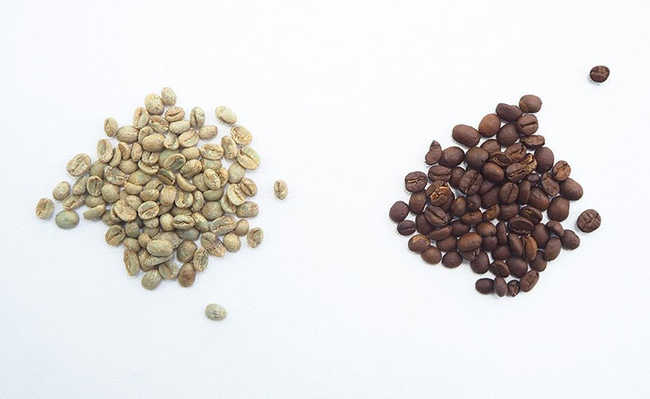What is buckwheat and its benefits
Buckwheat is gluten free and packed with health benefits

Buckwheat, also called buckwheat, is a seed of the scientific name plant. Fagopyrum esculentum. Despite the name, in botanical terms, buckwheat is different from common wheat (Triticum spp) and does not contain gluten . Because it has seeds rich in complex carbohydrates it is referred to as a pseudocereal, as are quinoa and amaranth.
Buckwheat grain cultivation declined sharply in the 20th century, with the adoption of nitrogen fertilizers that increased the productivity of other staple foods.
Buckwheat later became popular as a healthy food because it was gluten free and had a high mineral and antioxidant content.
- What is gluten? Bad guy or good guy?
Two types of buckwheat , common buckwheat (Fagopyrum esculentum ) and the buckwheat tartaric (Fagopyrum tartaricum), are most widely cultivated for food, mainly in the northern hemisphere, especially in Russia, Kazakhstan, China and Central and Eastern Europe.
nutritional properties
Carbohydrates are the main components of buckwheat. But it's also rich in protein and various minerals and antioxidants.
Every 100 grams of raw buckwheat contains:
- Calories: 343
- Water: 10%
- Protein: 13.3 grams
- Carbohydrates: 71.5 grams
- Sugar: 0 grams
- Fiber: 10 grams
- Fat: 3.4 grams
Carbohydrates
Buckwheat is mainly composed of carbohydrates, which make up about 20% by weight of the cooked groats. They come in the form of starch, which is the primary storage form of carbohydrates in plants.
Buckwheat scores low to medium on the glycemic index (GI) - a measure of how quickly a food raises blood sugar after a meal - not causing unhealthy spikes in blood sugar levels.
Some of the soluble carbohydrates in buckwheat, such as phagopyritol and D-chiro-inositol, have been shown to help moderate the post-meal spike in blood sugar (see studies on this: 1, 2).
Fiber
Buckwheat contains a fair amount of fiber, which is good for colon health. By weight, fiber represents 2.7% of cooked lumps and is mainly composed of cellulose and lignin (see study about it here: 3).
The resistant starch present in buckwheat is fermented by beneficial intestinal bacteria called probiotics. These beneficial bacteria produce short-chain fatty acids such as butyrate. Butyrate and other short-chain fatty acids serve as nutrition for the cells that line the colon, improving intestinal health and decreasing the risk of colon cancer (see studies on this: 4, 5, 6, 7).
Protein
Buckwheat contains small amounts of high quality protein, which make up 3.4% of the weight of the cooked groats, particularly the amino acids lysine and arginine.
However, the digestibility of these proteins is relatively low due to the presence of antinutrients such as protease inhibitors and tannins (see studies about it here: 8, 9).
In animal studies, buckwheat protein has been shown to be effective in lowering blood cholesterol, suppressing the formation of gallstones and reducing the risk of colon cancer (see studies on this: 10, 11, 12, 13, 14).
Like other pseudocereals, buckwheat is gluten free and therefore suitable for people with gluten intolerance.
Minerals
Buckwheat is richer in minerals than many cereals such as rice, common wheat and corn.The most abundant minerals in common buckwheat are:
- Manganese. Found in large amounts in whole grains, manganese is essential for healthy metabolism, growth, development and the body's antioxidant defenses;
- Copper. Often deficient in the Western diet, copper is an essential element that can benefit heart health when taken in small amounts;
- Magnesium. When present in sufficient amounts in the diet, this essential mineral can reduce the risk of many chronic diseases, such as type 2 diabetes and heart disease;
- Iron. Iron deficiency leads to anemia, a condition characterized by a reduced oxygen-carrying capacity of the blood;
- Phosphor. This mineral plays an essential role in the growth and maintenance of body tissues.
Rich in Antioxidants
Buckwheat is rich in several antioxidant compounds, including:- Rutin. Buckwheat's main antioxidant polyphenol, rutin, may reduce cancer risk and improve inflammation, blood pressure, and blood lipid profile;
- Quercetin. Found in many plant foods, quercetin is an antioxidant that has a variety of beneficial health effects, including reducing the risk of cancer and heart disease;
- Vitexin. Animal studies indicate that vitexin may have several health benefits. However, excessive intake can damage the thyroid;
- D-chiro-inositol. A unique type of soluble carbohydrate that lowers blood sugar levels and may benefit diabetes control. Buckwheat is the richest food source of this vegetable compound.
- Hypothyroidism: what it is, symptoms and treatment
- Hyperthyroidism: what it is, symptoms and treatment
In fact, buckwheat provides more antioxidants than many other cereal grains such as barley, oats, wheat and rye (see studies on this here: 16, 17, 18). In addition, its antioxidant is superior to that of common buckwheat (see studies about it here: 19, 20).
health benefits
Helps control blood sugar
Over time, high blood sugar levels can lead to a number of chronic diseases, such as type 2 diabetes. So, moderating the rise in blood sugar after meals is important for maintaining good health.
As a good source of fiber, buckwheat has a low to medium glycemic index. This means that it is safe for most people with type 2 diabetes (see study about it here: 19). Some studies, including the intake of buckwheat at low blood sugar levels in people with diabetes (see studies here: 20, 21).
In a study of diabetic rats, a buckwheat concentrate was shown to reduce blood sugar levels by 12% to 19%. This effect is thought to be due to the compound D-chiro-inositol, which makes cells more sensitive to insulin, the hormone that makes cells absorb sugar from the blood (see studies about it here: 22, 23, 24, 25). Also, according to another study, some components of buckwheat appear to impede or delay the digestion of white sugar.
Overall, these properties make buckwheat a healthy choice for people with type 2 diabetes or those who want to improve their blood sugar levels.
heart health
As it is rich in magnesium, copper, fiber and some proteins, buckwheat is good for the heart. Its rutin content can reduce the risk of heart disease, preventing the formation of blood clots and lowering inflammation and blood pressure (see studies about it here: 26, 27, 29).
- 16 foods that are natural anti-inflammatory
It also improves blood fat levels, therefore doing good for heart health. A study of 850 Chinese adults linked buckwheat consumption to lower blood pressure and a better blood lipid profile, including lower levels of LDL cholesterol (bad) and higher levels of HDL cholesterol (good).
- Does altered cholesterol have symptoms? Know what it is and how to prevent it
It is believed that this effect is caused by a type of protein that binds to cholesterol in the digestive system, preventing its absorption into the bloodstream (see studies about it here: 30, 31, 32, 33).
Allergy
Despite causing allergic reactions in some people, buckwheat has no known adverse effects when eaten in moderation.
It is more common for the allergy to appear in people who ingest large amounts of buckwheat. A phenomenon known as cross-reaction makes this allergy more common in people allergic to latex or rice (see studies about it here: 34, 35).
Symptoms can include rash, bloating, digestive discomfort and - in the worst case scenario - severe allergic shock (see study on this: 36).
Adapted from Atli Anarson










